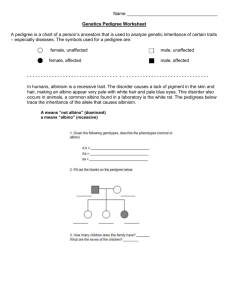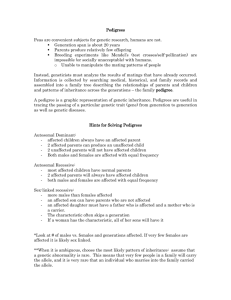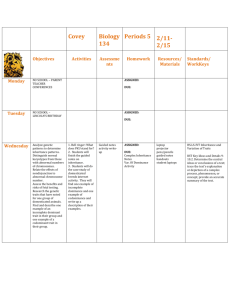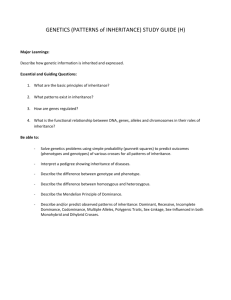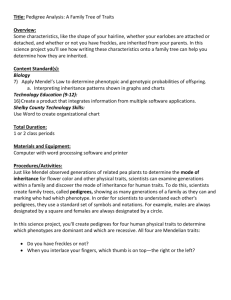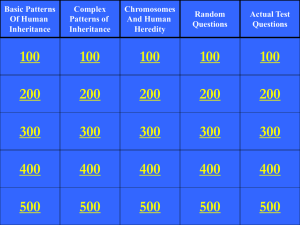Study Guide for the Chapter 11 Test
advertisement
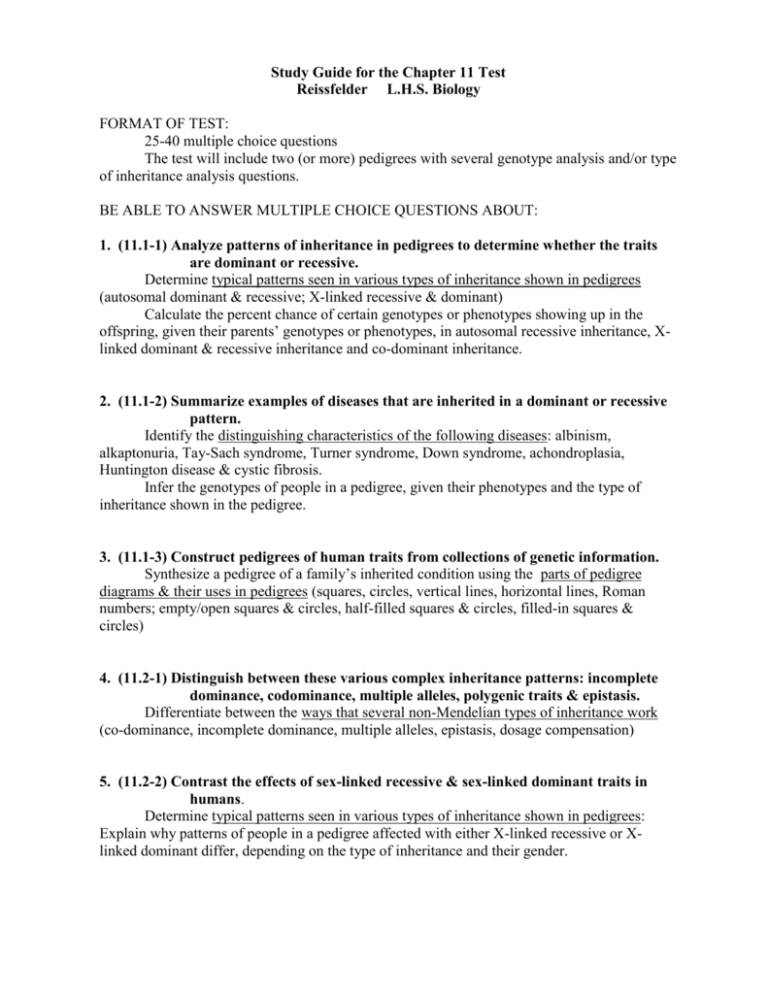
Study Guide for the Chapter 11 Test Reissfelder L.H.S. Biology FORMAT OF TEST: 25-40 multiple choice questions The test will include two (or more) pedigrees with several genotype analysis and/or type of inheritance analysis questions. BE ABLE TO ANSWER MULTIPLE CHOICE QUESTIONS ABOUT: 1. (11.1-1) Analyze patterns of inheritance in pedigrees to determine whether the traits are dominant or recessive. Determine typical patterns seen in various types of inheritance shown in pedigrees (autosomal dominant & recessive; X-linked recessive & dominant) Calculate the percent chance of certain genotypes or phenotypes showing up in the offspring, given their parents’ genotypes or phenotypes, in autosomal recessive inheritance, Xlinked dominant & recessive inheritance and co-dominant inheritance. 2. (11.1-2) Summarize examples of diseases that are inherited in a dominant or recessive pattern. Identify the distinguishing characteristics of the following diseases: albinism, alkaptonuria, Tay-Sach syndrome, Turner syndrome, Down syndrome, achondroplasia, Huntington disease & cystic fibrosis. Infer the genotypes of people in a pedigree, given their phenotypes and the type of inheritance shown in the pedigree. 3. (11.1-3) Construct pedigrees of human traits from collections of genetic information. Synthesize a pedigree of a family’s inherited condition using the parts of pedigree diagrams & their uses in pedigrees (squares, circles, vertical lines, horizontal lines, Roman numbers; empty/open squares & circles, half-filled squares & circles, filled-in squares & circles) 4. (11.2-1) Distinguish between these various complex inheritance patterns: incomplete dominance, codominance, multiple alleles, polygenic traits & epistasis. Differentiate between the ways that several non-Mendelian types of inheritance work (co-dominance, incomplete dominance, multiple alleles, epistasis, dosage compensation) 5. (11.2-2) Contrast the effects of sex-linked recessive & sex-linked dominant traits in humans. Determine typical patterns seen in various types of inheritance shown in pedigrees: Explain why patterns of people in a pedigree affected with either X-linked recessive or Xlinked dominant differ, depending on the type of inheritance and their gender. Study Guide for the Chapter 11 Test (continued) Reissfelder L.H.S. Biology 6. (11.2-3) Explain how sex determination occurs, using the XY system. Contrast the difference between autosomes & sex chromosomes 7. (11.2-4) Discuss the interrelationship between dosage compensation, chromosome inactivation & Barr bodies. 8. (11.3-1) Distinguish normal karyotypes from those with abnormal numbers of chromosomes. Explain the purpose & diagnostic use of karyotypes in determining genetic disorders caused by an unusual number of chromosomes. 9. (11.3-2) Define what telomeres are; describe their role in a cell. Explain the role of telomeres in the protection of chromosomes; also, their role in causing cancer and aging 10. (11.3-3) Relate the effects of nondisjunction to examples of diseases which involve abnormal numbers of chromosomes. Explain the formation of monosomy & trisomy due to nondisjunctions during meiosis I & II. Explain the causes/effects of a certain monosomy (Turner syndrome) on an individual. Explain the causes/effects of certain trisomies (Down syndrome, Klinefelter’s syndrome, XXX & XXXX females, Edward’s syndrome, Patau syndrome) on an individual. 11. (11.3-4) Assess the benefits & risks of diagnostic fetal testing. Explain the benefits & risks of three fetal testing methods: amniocentesis, chorionic villus sampling (CVS) & fetal blood sampling. Given a certain situation involving the possible use of fetal testing methods, identify which one of the three is the one least likely to cause complications to the fetus & mother.
